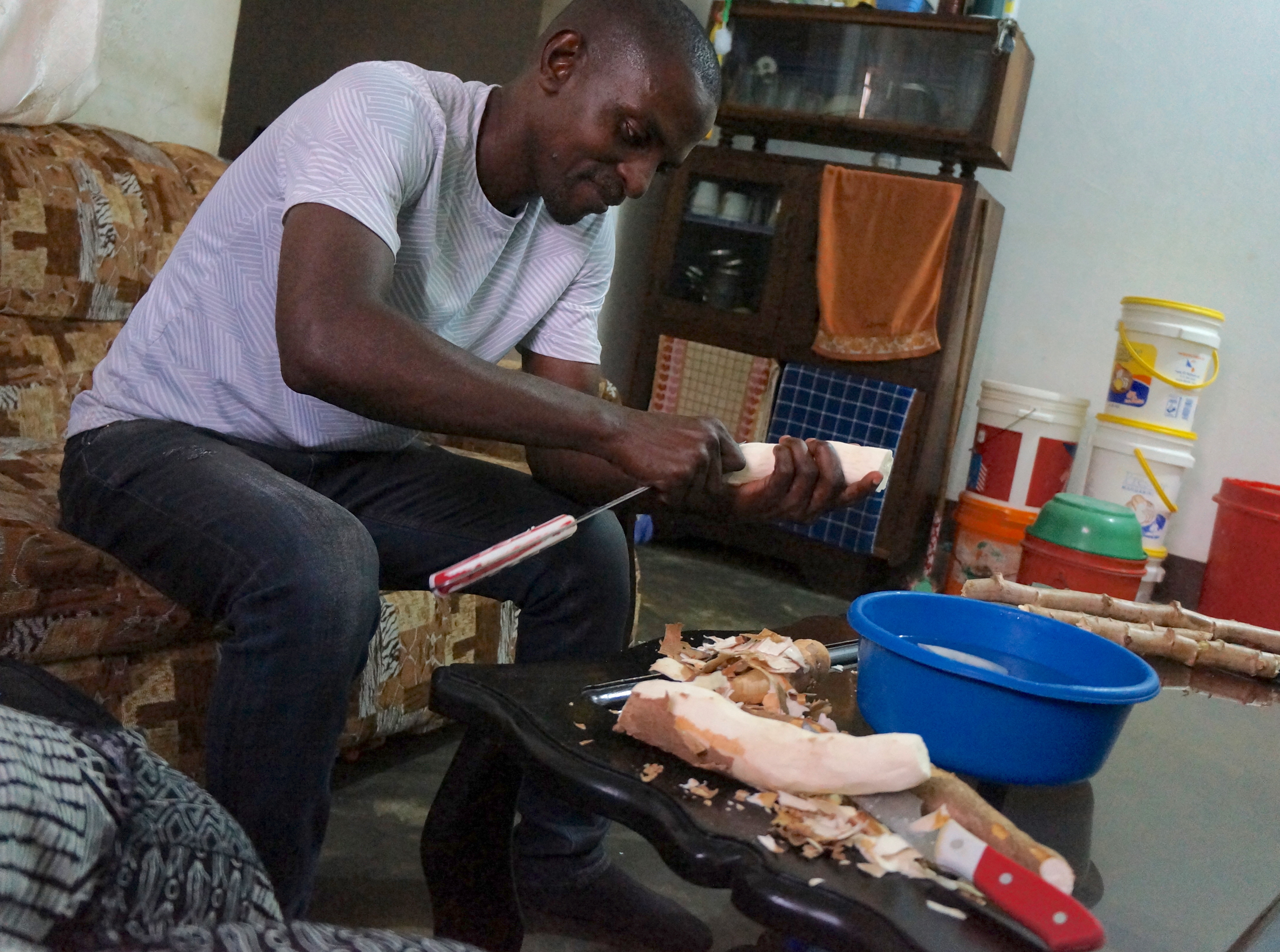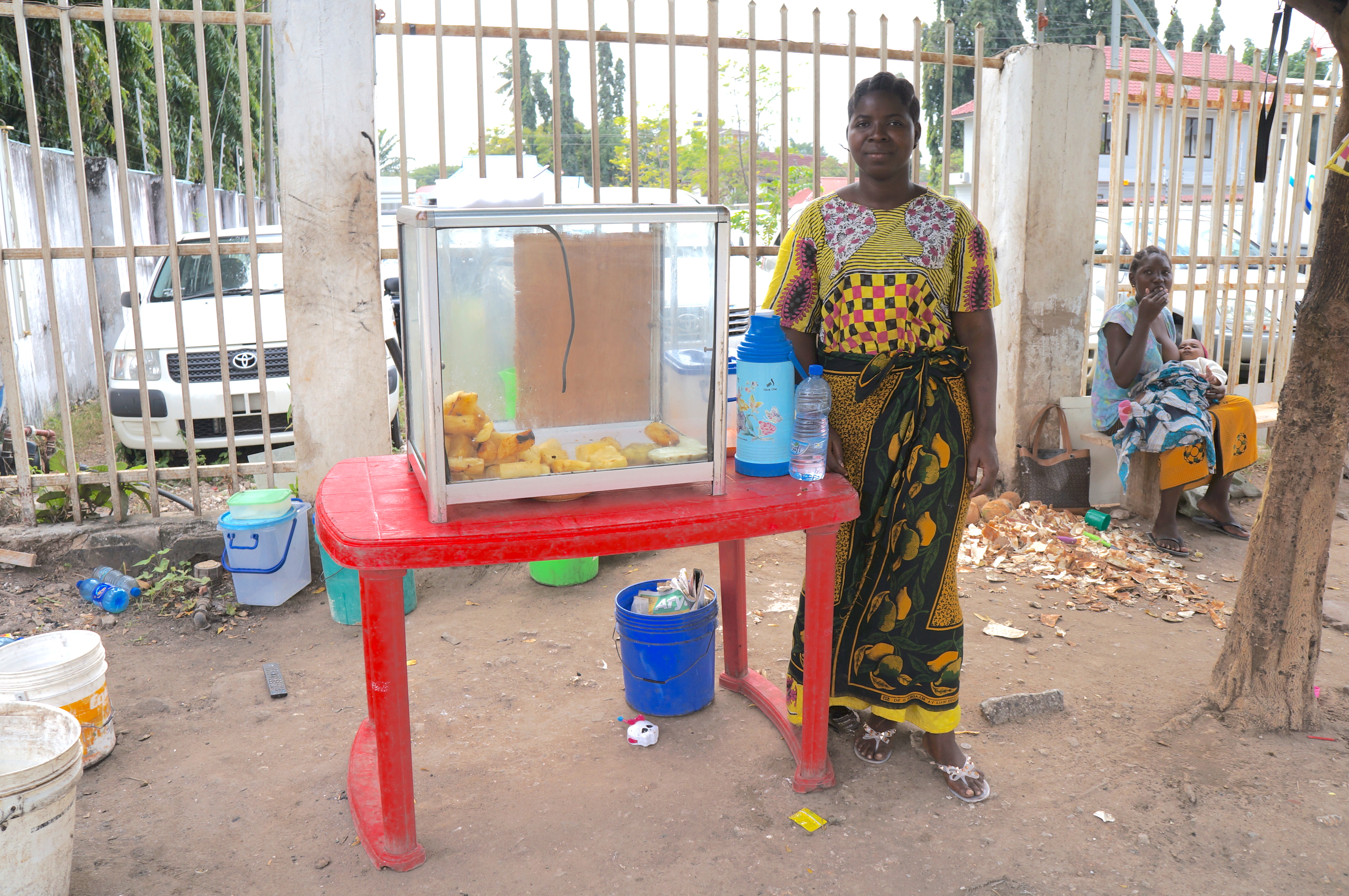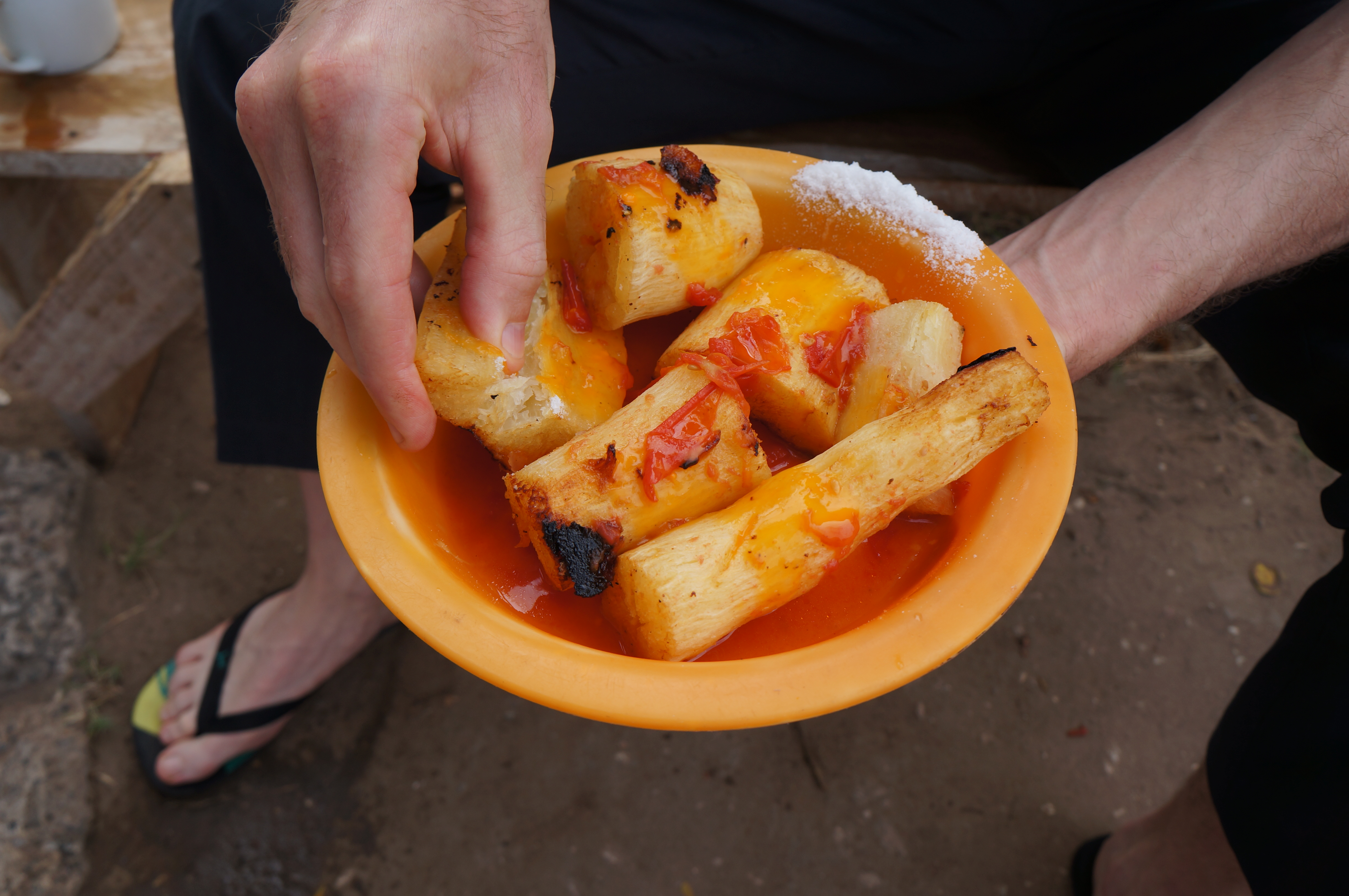Cassava is prepared and eaten in dozens—maybe hundreds—of different ways, varying from one country to the next and even from one neighboring region to another. On a recent visit to Dar es Salaam, the largest city in Tanzania, I was curious about how cassava was consumed locally. I knew that cassava roots are boiled and eaten, or could be used to make ugali, a widely-consumed stiff porridge that often accompanies beans or stew as the carbohydrate portion of the meal, and which can also be made out of maize or other flours. This genre of cassava product is common in many cassava-consuming sub-Saharan African countries, prepared in myriad ways and called by many different names (gari, eba, fufu, to name just a few). But it was news to me that fried cassava (or mihogo, as it’s called in Swahili) is a popular breakfast food in Dar.

Mathew peeling cassava to boil, in his home in Mbagala.
My Tanzanian friend and guide Mathew Mkwawa eats cassava for breakfast every morning with his wife Anna and their three children. At the start of his day, Mathew walks down his street in Mbagala, a suburb of Dar, to buy cassava from a local seller. Not only is the food tasty and filling, it’s also inexpensive. Cassava in the market is sold for around 100 Tanzanian shillings per piece. By purchasing 15 pieces he can provide breakfast for his family of five, all for about sixty-five cents USD. Many people eat it for lunch, too; instead of paying 3,000 Tz shillings for rice and beans, you can get two large pieces of fried cassava and a Pepsi for about a quarter of the price. As Tanzania is going through an economic downturn and cashflow is low for many families, cassava’s affordability has made it more popular.

A typical breakfast at Mathew’s house: fried cassava, and chai (tea) with sugar.
Mathew introduced me to the woman who runs his favorite neighborhood cassava stand, Mariam Kibamandu. Before dawn each morning she goes to a local market and buys three bundles of roots (anywhere from 6-10 roots per bundle, depending on the size) from a middleman who buys in bulk from a farmer. At her stand she peels the roots, slices them up and fries them in sunflower oil.

Mariam peeling a pile of cassava roots.
Each bundle costs Mariam about 1,000 Tz shillings. She would like to buy 5-10 bundles a day, but business is too slow these days to support a large purchase. Luckily, any cassava she buys and doesn’t sell in a day doesn’t have to go to waste. If it’s unpeeled, she can keep it fresh for up to 10 days, buried in a hole in the ground. If she’s already peeled it, she can no longer fry it but she can store it up to 5 days in a bucket of water, and turn it into ugali.
One morning I and a Swahili-speaking friend went to a small, independent roadside restaurant on Warioba Street to sample the fried cassava, and see firsthand the process of how the roots are prepared. At a neighboring stall women were selling chapati, small flatbreads that are another popular food in Dar. We ordered our breakfast and, after a lull in the rush of customers, asked the proprietor about her experiences feeding those in the neighborhood.

Rose Endu, running her roadside restaurant on Warioba Street.
Rose Endu, the young owner of the stall, worked alone that day, but normally sells cassava alongside her mother, who started the business 20 years ago. Each morning they purchase about 15,000 Tz shillings’ worth of cassava, arriving at the market by 3 a.m. to supply their city restaurant. By 5 a.m. they are back on Warioba Street to begin the chore of peeling the roots. Like Mariam, they slice and fry the cassava (they use peanut oil), and they serve it with sauce called kachumbari, made from tomatoes, onions and peppers. Every sellers’ kachumbari recipe is slightly different—Mariam’s has carrots, too. Rose even makes a special homemade ginger hot sauce for her customers who like heat.

Rose and her mother frying cassava pieces in peanut oil.
As business picked up, Rose went back to serve more customers. As we left, I asked Rose why so many people seem to love her mihogo? She said, “Some people don’t like chapati, and when they taste our cassava and it’s good, they’ll come back for more!”

Our delicious breakfast of fried cassava with kachumbari (and a salt rim!).





